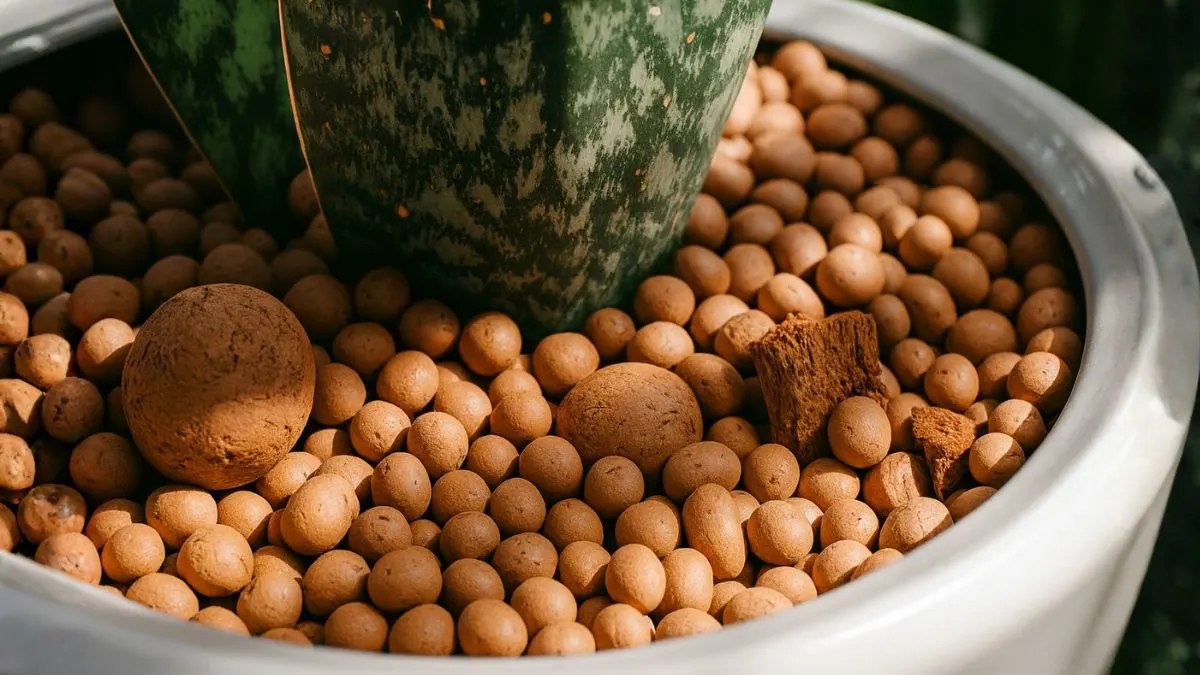If you’ve been diving into modern plant care trends, then chances are you’ve come across LECA balls — the round, clay-based growing medium that has people talking. Some say they’re the holy grail for houseplants, others that they’re just another fad. So are LECA balls actually beneficial for plants, or are they just overhyped? Let’s dive into the facts, the pros and cons, and how to actually use them successfully.
What Are LECA Balls?

LECA (Lightweight Expanded Clay Aggregate) balls are clay that has been baked into small balls of various sizes and fired in a rotary kiln at high temperature. The material expands and provides an extremely porous structure.
They are commonly used in hydroponic and semi-hydroponic environments. Unlike soil, compost or peat that break down over time, LECA is more renewable and sustainable.
These tiny spheres trap moisture in their pores and allow oxygen to flow around the roots. This is why they are so popular with indoor growers in Canada, USA and globally.
LECA Balls Benefits
Why plant parents love LECA balls:
- Improved Drainage & Aeration – Prevents root rot and fungal gnats.
- Water Regulation – Retains just the right level of moisture.
- Reusable – Can be washed and reused, unlike soil.
- Cleaner Planting – Less mess than potting soil, ideal for indoor gardening.
Personal Tip: I turned my orchid to LECA and it stopped having root rot and produced healthy leaves after a few months.
Also Read: Sahadevi Plant: The Hidden Vastu Herb That Attracts Positivity & Healing
The Limitations of LECA
Despite the hype, LECA is not nutrient-rich. You’ll need to add hydroponic or liquid fertilizers.
Other considerations:
- Pre-treatment Necessary – Must rinse/soak to remove dust.
- Not for Every Plant – Plants that thrive in wet soil (like ferns) don’t do well.
- Monitor Water Levels – Needs more frequent refills.
How to Use and Prepare LECA Balls
1: Rinse and Soak – Rinse to remove dust. Soak for 24 hrs.
2: Choose the Right Pot – Net pots, self-watering pots or containers with drainage holes.
3: Add Your Plant – Add a layer of LECA, place plant, fill around roots.
4: Watering – Add water at base of pot, let it wick upwards.
LECA vs Soil – A Comparison in Brief
Feature |
LECA Balls |
Traditional Soil |
Drainage |
Excellent |
Variable |
Nutrient Profile |
No nutrients (fertilizer needed) |
Naturally nutrient-rich |
Wearability |
Cleaner, reusable |
Breaks down over time |
Pest Resistance |
Resistant to fungus gnats |
Can host pests |
Upkeep |
Requires checking water levels |
Easier for beginners |
Also Read: Periwinkle Plant: The Easiest Blooming Beauty
Best Plants for LECA
Plants that thrive with LECA:
- Orchids – Roots love air circulation.
- Monsteras – Perfect for semi-hydro environments.
- Philodendrons & Pothos – Fast growing in LECA.
- Succulents – Benefit from dry/wet cycle.
Plants to Avoid in LECA
- Ferns – Need consistently moist soil.
- Prayer Plants – Thrive only in rich, damp soil.
Personal Experience with LECA
When I grew a Redbud tree indoors in LECA, it survived but slowed without fertilizer. In contrast, my aquarium plants thrived in LECA baskets underwater.
Lesson: LECA success depends on the plant and proper nutrients.
Yes — LECA balls can be amazing in the right conditions. They improve aeration, reduce pests, and put you in control of watering. But — LECA has no nutrients. You must fertilize.
👉 If you like experimenting and don’t mind monitoring, LECA is life-changing.
👉 If you prefer low-maintenance, soil may still be the best choice.






